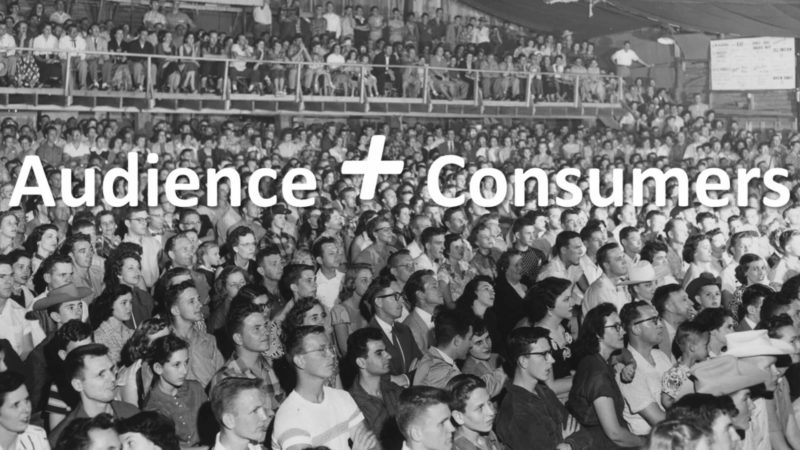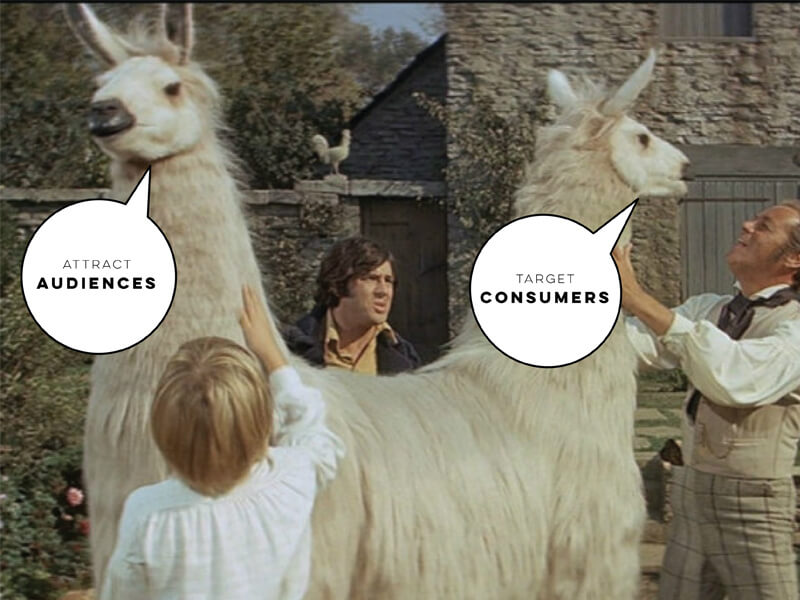How to build an audience of consumers in today’s highly competitive environment
Amid the super saturated digital advertising space, how can your brand break through? Contributor Peter Minnium explains how building an audience will give you a competitive advantage.

Today, brands market and sell their products in an environment that is more competitive than ever.
Consumers are subjected to so much marketing content that it is hard for any one brand to stand out, leaving them trying in vain to outshout their competitors.
Products are so advanced that even the most basic models far exceed people’s needs, and innovations lead to, at best, short-term marginal share gain as they are quickly met by competitors.
Perhaps the only truly sustainable competitive advantage remaining is having a deeper, better understanding of — and relationship with — the people who do, or may, buy your product.
Achieving this is clearly challenging: All brands have access to essentially the same data — on consumers, media targeting, social networks, purchases and so on — as well as the same analytical tools and expertise.
The pushmi-pullyu of brand engagement
Real competitive advantage won’t be found by looking harder in the same old places; it requires a paradigm shift in how brands view and engage with people. Successful brands will treat people as an audience whose protracted engagement must be cultivated, rather than imagining them exclusively as consumers whose immediate choices are to be influenced.
Like the woolly pushmi-pullyu, this holistic strategy must unite the need to compel action with a newfound ability to capture the audience’s imagination, pulling them into the brand narrative just as much as it pushes them to buy.
One need only look at the relative valuations of Facebook and Twitter to understand the value of an engaged audience, and many brands are beginning to frame the challenge in this light.

The typical push approach is familiar to everyone with any exposure to the advertising business: The population is segmented, targets are built, and likely buyers are interrupted with ads designed to drive awareness and purchase intent. The process is often understood to be both mechanistic and unilateral.
We even use the term “media impression” to describe what we buy, and our desired outcome is to “make an impression,” conjuring images of stamping our message into people’s foreheads. We then track buying behavior and loyalty, and assign people a lifetime value, reducing them to a number in a spreadsheet.
The pull approach is closer to the strategy of entertainment companies seeking to build an audience: Loyalty and enthusiasm are constructed on a foundation of compelling content, and are maintained by an attentiveness to how the content is received.
Five steps to building an audience of consumers
To achieve a sustainable competitive advantage in a time of relative equivalence in marketing methods, it is imperative to combine the push with the pull. Here are five steps to start the journey:
1. Recognize your customer’s duality.
Digital technology has enabled an unprecedented level of interaction between brands and the consumer whereby the two are partners in communication. In a world of increasing parity among both products and marketing tools, the purchase can no longer be thought of as the end of a successful marketing strategy.
The relationship between consumer and brand has to transcend the realm of product to that of values and interests, taking the form of an ongoing dialogue between brand and audience.
2. See the consumer in three dimensions.
Advances in marketing technology have enabled a data-driven synchronization of advertising content with media context. It is now feasible not only to track where people consume content, but also what they are doing, and why they are doing it.
Many marketers today are like hunters, searching for the watering hole because they know their prey gathers there, without asking why they drink. Instead of plastering billboards around the watering hole, why not offer bottles of water with a message on the wrapper?
By strengthening the conceptual fluency of marketing content, it is possible not only to improve reception and retention of a brand’s message, but also to increase viewer engagement.
3. Sell the story, then the brand.
Regardless of medium or placement, all content relies on effective storytelling to achieve maximum impact. Above all, this requires a fully developed plot — consisting of a beginning, middle and end — that clearly demonstrates movement toward an improved state of being.
A successful campaign captures the audience’s imagination through this transformation from a troubled present to a brighter future, typically via the brand or product. It’s far more important that viewers be interested in the brand’s story than in the product itself; the typical viewer may not go running to their social circle to recount the latest ad, but they are much more likely to share an inspiring or amusing story.
4. Produce a story system.
One of the perks of building a loyal audience is that brands no longer need to rely on single iterations of a message to get their point across. Like a popular movie franchise, brands that cultivate user engagement can afford to tell their story serially, moving across mediums and platforms as they flesh out the different facets of their vision.
With each piece of content tailored to the conceptual space it occupies, the audience is able to interact with brand content in a manner more natural to the way they consume media content in general.
5. Measure what matters.
Use a combination of behavioral and attitudinal metrics. In the digital world, there are countless machine-generated metrics, based on observed behavior, that allow brands to evaluate with precision where and how viewers interact with marketing content. These include the dreaded click-through rate, but also time spent and likes and shares, among others.
It’s now possible to bring these together with brand-specific metrics like awareness, favorability and purchase intent. This offers a fuller picture of how the audience of consumers is engaging with the content, making it possible to create and deliver it in an ever more relevant and impactful way.
Audience + consumers = competitive advantage
In this hypercompetitive world, too many of us are sticking to the “tried and true” of push marketing and consequently failing to distinguish ourselves. Any impact will thus be negligible and short-lived, lasting only until the novelty of the newest doohickey is surpassed.
The “madtech” mashup creates new challenges, but also a historic opportunity to change the way brands build audiences of consumers — and create a sustainable competitive advantage.
Contributing authors are invited to create content for MarTech and are chosen for their expertise and contribution to the search community. Our contributors work under the oversight of the editorial staff and contributions are checked for quality and relevance to our readers. MarTech is owned by Semrush. Contributor was not asked to make any direct or indirect mentions of Semrush. The opinions they express are their own.
Related stories